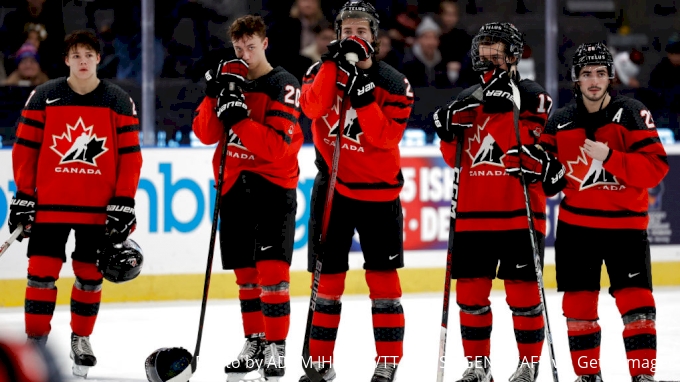Travel
Can Travel Loyalty Programs Avoid A Midlife Crisis?

More than 40 years ago in 1979, Texas International Airlines introduced the first modern frequent flyer program, “Payola Passes,” to thank its customers who were “heavy” travelers. Fast forward a couple of years to when it was overtaken by American Airlines’ AAdvantage in 1981, and the world of airline loyalty programs has been flying high for over forty years.
But after four decades of changes, evolving rewards, and advancements in technology, airline loyalty programs have hit a standstill – what some would consider a midlife crisis.
According to Lars Parmekar, Director at Capillary Technologies, “The AAdvantage program was created to capitalize on excess seat capacity in 1981.” Lars elaborated that excess seat capacity is no longer an industry issue.
“Airline loyalty programs offer exclusive benefits to top-tier travelers – privileges such as faster check-ins, lounge access, upgrades, and generally more seamless travel experience,” said Sean Claessen, partner at Bond Brand Loyalty. “However, the growing issue of ‘top-tier turbulence’ is threatening the foundation of these programs. With the number of top-tier members swelling beyond what was originally intended, the concept of exclusivity, which is central to loyalty, gets eroded.”
To get back to their roots, airline loyalty programs need to understand what’s causing the oversaturation and how to keep their passengers happy.
The Commoditization of Travel Status
When there’s overcrowding in the pit of a concert, the entry point is usually the issue. The same is true for airline loyalty programs; elite status is becoming increasingly more accessible. In the past, reaching the highest tiers of an airline’s loyalty program required frequent travel and significant expenditure. Now, with more people gaining top-tier status through credit card spending or promotions, the hard-earned sense of accomplishment that once accompanied reaching “elite status” is losing value.
Shortcuts have diminished the prestige of being a top-tier member and created a system where loyal travelers are treated the same way as those who have acquired their status financially.
Elite Travel Loyalty Program Overload
Just like when concertgoers get upset being pushed up against a stage, frequent travelers are becoming frustrated with an overload of passengers in their supposed “exclusive” loyalty program.
“One of the key reasons travelers strive for top-tier status is for access to perks that are limited to a select few,” said Henry Harteveldt, founder of Atmosphere Research. “However, the ranks of elite-status members have grown considerably over the past decade, largely due to the growth in overall travel and the expansion of loyalty programs through cobranded credit cards and financial promotions.”
Think about airport lounges as a loyalty perk. If you haven’t experienced luxury lounges, like the new Chase Sapphire Lounge at LaGuardia, you’re missing out on a little piece of serenity in a chaotic airport experience. The lounge has the type of food rarely found at any airport with a nice dose of art from the JP Morgan Chase Art Collection. This is a perk that’s even better than advertised.
Originally designed as a quiet retreat for the most loyal customers, airport lounges have become congested, feeling more like an extension of the main terminal rather than an exclusive oasis.
In Bond’s 2024 Loyalty Report, 28 percent of top-tier members expressed they feel their status is diluted by the growing number of members. Another one in four respondents said they often miss out on perks because of the overcrowding.
Exclusive lounges aren’t the only things frequent flyers feel they’re missing out on.
One of the most sought-after perks of elite status is seat upgrades. With so many members competing for premium seats, airlines can’t offer better seats in the same manner they used to.
The list of benefits becomes less attractive to travelers as well as the elite service provided. In some cases, more loyalty members imply response times may slow down and personal attention isn’t as prominent.
The Travel Loyalty Paradox: Eroding Trust
At their core, the purpose of loyalty programs is to build trust and foster a long-term relationship between the customer and the brand. By offering exclusive benefits, airlines incentivize travelers to choose them over competitors. However, when those exclusive benefits become oversaturated and fail to deliver on promises, trust can be lost.
For frequent travelers, the frustrations of overcrowded lounges, missed upgrades, and slower customer service can create a feeling of being let down. When customers feel their loyalty is no longer rewarded with meaningful perks, the motivation to stay loyal diminishes.
This leads to a paradox: the very program designed to strengthen loyalty ends up weakening it.
The Need for Travel Loyalty Program Innovation
“These loyalty programs that started based on the idea that you could leverage excess seat capacity to reward your most frequent customers, which isn’t the case today, need to evolve more quickly,” said Parmekar. In order to make this a win/win for the consumers and brands, brands need to understand that “not all people are motivated by miles. Knowing what incentives matter to unique consumer segments allows the brand to deliver meaningful benefits.”
Loyalty is not purely transactional; it’s emotional. The top driver of program loyalty continues to be the feeling of being valued and important.
I interviewed Robert Cole, Phocuswright contributor and senior research & travel industry analyst. Cole said, “Travel reward programs are often described as loyalty programs. They are too transactional and focused on seat and mileage rewards. True loyalty means a consumer is willing to pay a price premium for that brand based on some emotional connection between the consumer and brand.”
With that in mind, addressing top-tier turbulence requires reimagining the current structure of airline loyalty programs. One solution that could be used to restore a sense of exclusivity within a loyalty program is the introduction of invitation-only tiers reserved for travelers who have shown significant loyalty through flying exclusively, not by spending on credit cards.
Mark Ross-Smith, CEO of Loyalty Status Co and a former airline loyalty executive, to discuss innovation or perhaps lack thereof. Mark remarked that, “Airlines stopped innovating at the time of deregulation in the 1990s. The experience, unless you fly in a premium seat, has been too humdrum for too long.” Ross-Smith continued, “Co-brand credit cards have driven innovation, but that’s shifting the responsibility too far to an external party. It is too hard to redeem miles, and there are too few non-mile choices that would alleviate the issue.”
Ross-Smith elaborated that over the past 10 years, nearly all North American airlines have modestly devalued their points currency. Yet the earning opportunity for consumers remains remarkably consistent; the number of people collecting points has jumped dramatically, but the capacity to use airline points has increased at a much slower rate. As Mark said, “Earn the points without the chance to burn the points is a frustration.” Programs need a dose of innovation.
But restructuring a loyalty program won’t win back all customers. Airlines need to reshape the way they think about loyalty and offer rewards that get travelers excited about earning points again, including more personalized perks that move beyond the seat that isn’t often available.
“Loyalty is an emotion, not a points program,” said Seth Borko, head of research at Skift. “The current model isn’t a good mousetrap for most brands.”
Personalized Benefits Drive Travel Loyalty Program Engagement
For travelers to feel like their airline is truly rewarding them, personalization is key. For example, a business traveler who hasn’t been home for a week might be more interested in relaxing in a nice airport lounge, like the American Express Centurion Lounges, which offer chef-prepared food and spa services. Young travelers might be more interested in using their points for a live event on their spring break vacation. Listening to what members want is beneficial to not just the consumer but the airline as well.
“Listening to what members want is key to bringing them back and keeping loyalty programs successful,” said Daniel Held, Director at TFL. “A recent study we commissioned with The Harris Poll found that when people can exchange their loyalty points for live event tickets, they’re measurably more likely to spend more money with that brand (62%), use that brand instead of a competitor (63%), and recommend that brand to others (64%).”
Some businesses are jumping on the trend already.
“Through the Hilton Honors Experiences platform, members can redeem their points on money-can’t-buy opportunities that elevate their Hilton stays, whether it’s VIP access with McLaren Racing, exclusive meet-and-greets with their favorite celebrities, or immersive on-property offerings,” said Jenn Chick, SVP & Global Head of Loyalty and Customer Growth at Hilton. “Our program is designed to ensure that every Hilton Honors member feels uniquely valued and connected, no matter where travel takes them.”
Landing the Plane In The Crowded Travel Loyalty Program Space
Top-tier turbulence is more than just an operational headache for airlines – it’s a fundamental threat to the integrity of loyalty programs. By overcrowding at the highest levels of their programs, airlines risk alienating their most frequent and high-spending customers.
But by shifting the way airlines approach their loyalty programs; flyers can still feel excited to engage as a member and navigate how to best use their rewards.
Addressing the issues of overcrowding and understanding how to capitalize on personalization is essential for keeping loyalty programs relevant and preventing a midlife crisis.










